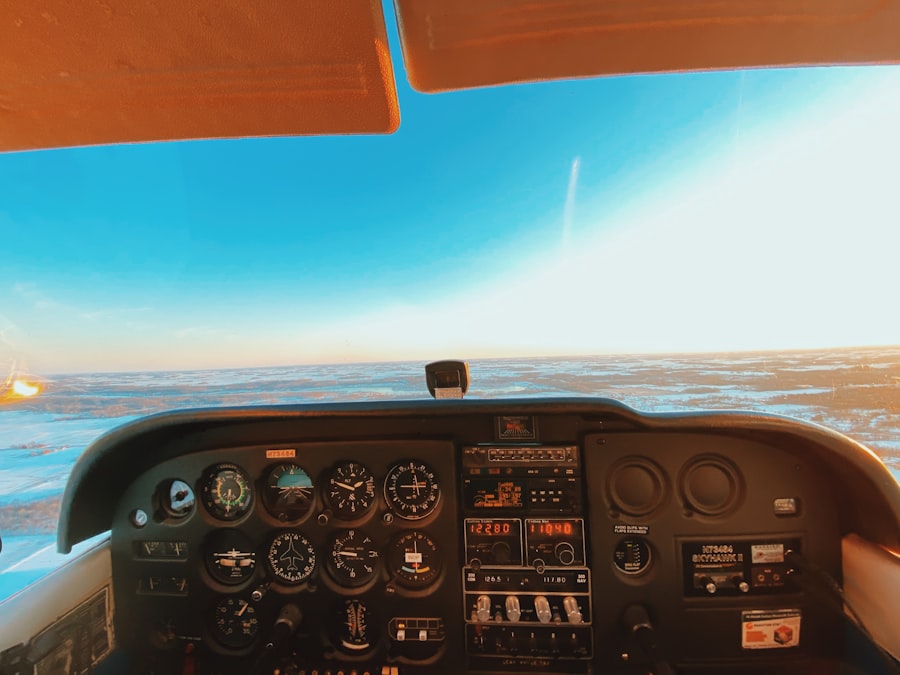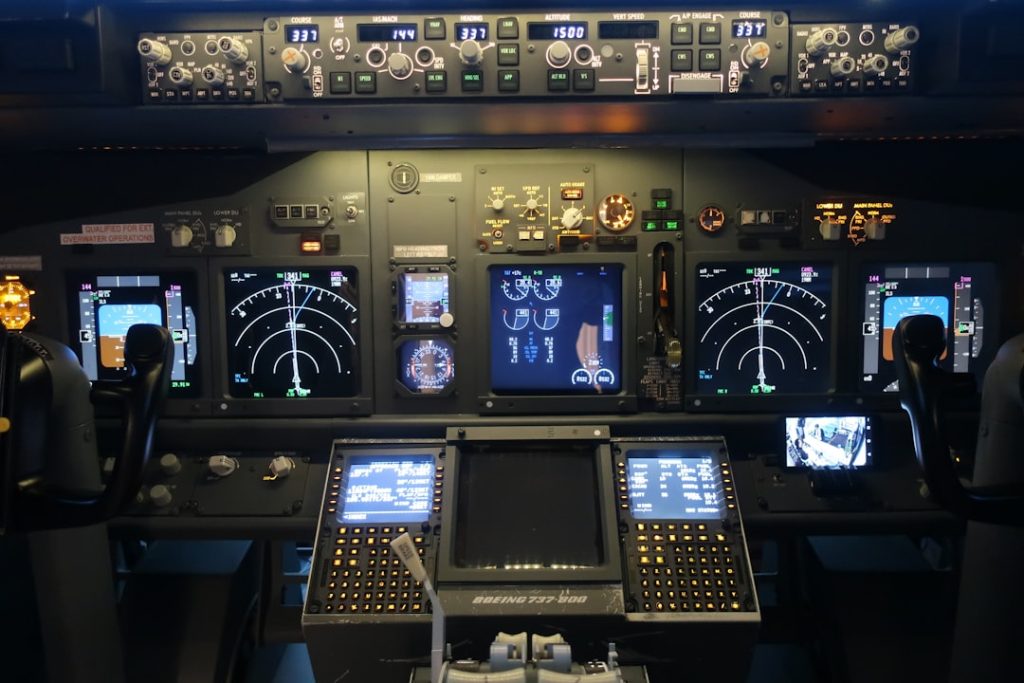Flight simulation has evolved significantly over the years, transitioning from rudimentary systems to highly sophisticated platforms that replicate real-world flying experiences. At its core, flight simulation involves the use of computer software and hardware to create a virtual environment where users can experience piloting an aircraft. This technology is not only a tool for entertainment but also serves as a critical training resource for aspiring pilots and aviation enthusiasts.
The primary objective of flight simulation is to mimic the physics of flight, allowing users to understand the principles of aerodynamics, navigation, and aircraft operation without leaving the ground. The fundamental components of flight simulation include the flight model, which dictates how an aircraft behaves in various conditions, and the graphical representation of the environment, which includes terrain, weather, and air traffic. Modern flight simulators utilize advanced algorithms to simulate the dynamics of flight accurately, taking into account factors such as weight distribution, engine performance, and atmospheric conditions.
Additionally, many simulators offer realistic cockpit layouts and instrument panels that mirror those found in actual aircraft, providing users with an immersive experience that enhances their understanding of aviation operations.
Key Takeaways
- Flight simulation allows you to experience the basics of flying an aircraft in a realistic virtual environment.
- Navigating the cockpit and controls is essential for understanding how to operate the aircraft and its systems effectively.
- Perfecting takeoff and landing techniques is crucial for a safe and smooth flight experience.
- Mastering flight maneuvers and aerobatics adds excitement and challenge to your simulation experience.
- Utilizing autopilot and navigation systems can help you navigate and control the aircraft more efficiently.
Navigating the Cockpit and Controls
A crucial aspect of flight simulation is familiarizing oneself with the cockpit layout and controls of the aircraft being simulated. Each aircraft has a unique arrangement of instruments and controls that pilots must learn to operate effectively. In a typical cockpit, you will find essential instruments such as the altimeter, airspeed indicator, artificial horizon, and navigation displays.
Understanding the function of each instrument is vital for successful flight operations. For instance, the altimeter measures altitude by comparing atmospheric pressure to a standard reference, while the airspeed indicator provides critical information about the aircraft’s speed relative to the surrounding air. In addition to the primary flight instruments, pilots must also become adept at using various controls, including throttle levers, yokes or control sticks, and rudder pedals.
The throttle controls engine power and thus affects speed and climb rate, while the yoke or stick is used to control pitch and roll. Rudder pedals are essential for managing yaw and coordinating turns. Mastering these controls requires practice and an understanding of how they interact with one another during different phases of flight.
For example, during takeoff, a pilot must carefully balance throttle input with control surface adjustments to achieve a smooth ascent.
Perfecting Takeoff and Landing Techniques

Takeoff and landing are arguably the most critical phases of flight, requiring precision and skill. During takeoff, pilots must ensure that they have sufficient speed to achieve lift while maintaining control of the aircraft. This process begins with a thorough pre-flight checklist to confirm that all systems are operational.
Once cleared for takeoff, pilots gradually increase throttle while monitoring airspeed. As the aircraft reaches its takeoff speed, typically indicated by the airspeed indicator, they must gently pull back on the yoke or control stick to lift off. Landing, on the other hand, involves a different set of challenges.
Pilots must approach the runway at a specific angle and speed while managing descent rates. A common technique is to establish a stable approach by aligning with the runway centerline and maintaining a consistent glide slope. This requires constant adjustments to throttle and pitch to ensure a smooth touchdown.
Additionally, pilots must be aware of wind conditions that can affect their approach; crosswinds can complicate landing by pushing the aircraft off course. Successful landings often involve a delicate balance between maintaining speed and controlling descent rate until just before touchdown.
Mastering Flight Maneuvers and Aerobatics
| Flight Maneuver | Description | Difficulty Level |
|---|---|---|
| Loop | An aerobatic maneuver where the aircraft flies a complete 360-degree circle in the vertical plane. | Intermediate |
| Roll | An aerobatic maneuver where the aircraft rotates about its longitudinal axis. | Beginner |
| Immelmann Turn | A maneuver where the aircraft performs a half loop followed by a half roll, resulting in a 180-degree change in direction. | Intermediate |
| Hammerhead Turn | An aerobatic maneuver where the aircraft climbs vertically until losing airspeed, then performs a half roll and descends vertically. | Advanced |
Once pilots have gained confidence in basic operations like takeoff and landing, they can begin to explore more advanced flight maneuvers and aerobatics. These skills not only enhance a pilot’s proficiency but also provide a deeper understanding of aircraft dynamics. Common maneuvers include steep turns, stalls, and spins.
Each maneuver requires precise control inputs and an understanding of how changes in speed and altitude affect the aircraft’s behavior. Aerobatics takes this concept further by incorporating acrobatic maneuvers such as loops, rolls, and barrel rolls into flight training. While aerobatic flying is often associated with airshows and competitions, it also serves as an excellent way for pilots to develop their coordination and spatial awareness in three-dimensional space.
For instance, performing a loop requires careful management of speed and altitude; pilots must pull back on the yoke to initiate the climb while ensuring they do not exceed the aircraft’s structural limits during the maneuver. Mastering these techniques not only builds confidence but also enhances overall flying skills.
Utilizing Autopilot and Navigation Systems
Modern flight simulators often come equipped with advanced autopilot systems that can assist pilots in managing various aspects of flight. Autopilot allows for automated control of altitude, heading, and speed, freeing pilots to focus on navigation and communication tasks. Understanding how to engage and disengage autopilot systems is essential for effective flight management.
Pilots must also learn how to set waypoints and navigate using GPS systems or traditional navigation aids such as VOR (VHF Omnidirectional Range) stations. In addition to autopilot functionality, flight simulators provide access to various navigation tools that enhance situational awareness during flight. For example, Flight Management Systems (FMS) allow pilots to input flight plans that include waypoints, altitudes, and speeds.
This information is crucial for long-distance flights where precise navigation is required. Pilots must familiarize themselves with these systems to ensure they can effectively manage their route while adhering to air traffic control instructions.
Managing Weather and Turbulence Challenges

Weather plays a significant role in aviation safety and performance; thus, understanding how to manage weather-related challenges is vital for any pilot. Flight simulators often incorporate realistic weather conditions that can range from clear skies to severe thunderstorms. Pilots must learn how to interpret weather reports and radar displays to make informed decisions about their flight paths.
For instance, encountering turbulence during flight can lead to discomfort for passengers and potential control issues for pilots. Turbulence can be caused by various factors such as thermal currents, jet streams, or mountain waves. Pilots must be prepared to adjust their altitude or route in response to changing weather conditions.
In a simulator environment, practicing these scenarios allows pilots to develop strategies for coping with turbulence without compromising safety. Additionally, understanding how different weather phenomena affect aircraft performance—such as reduced lift in high-density altitude conditions—can help pilots make better decisions during their flights.
Exploring Different Aircraft and Scenarios
One of the most appealing aspects of flight simulation is the ability to explore a wide variety of aircraft types and flying scenarios. From small general aviation planes to large commercial airliners or military jets, each aircraft presents unique challenges and operational characteristics. Pilots can experiment with different types of flying experiences by switching between aircraft models in their simulator software.
Moreover, flight simulators often allow users to engage in diverse scenarios ranging from routine flights between major airports to emergency situations requiring quick thinking and problem-solving skills. For example, simulating an engine failure during takeoff forces pilots to practice emergency procedures such as maintaining control while executing a safe return to the runway or finding an alternate landing site. These varied experiences not only enhance technical skills but also prepare pilots for real-world challenges they may encounter in their aviation careers.
Fine-tuning Your Skills with Practice and Persistence
The journey toward becoming a proficient pilot through flight simulation requires dedication and consistent practice. Just as in real-world flying, developing skills takes time; therefore, aspiring pilots should approach their training with patience and persistence. Regularly engaging with different aspects of flight simulation—whether it be practicing takeoffs and landings or mastering complex maneuvers—will lead to gradual improvement over time.
Additionally, seeking feedback from experienced pilots or participating in online communities can provide valuable insights into areas for improvement. Many flight simulation platforms offer multiplayer options where users can fly together or share experiences; this collaborative environment fosters learning through shared knowledge and techniques. By embracing both practice and community engagement, aspiring pilots can refine their skills effectively while enjoying the immersive world of flight simulation.


